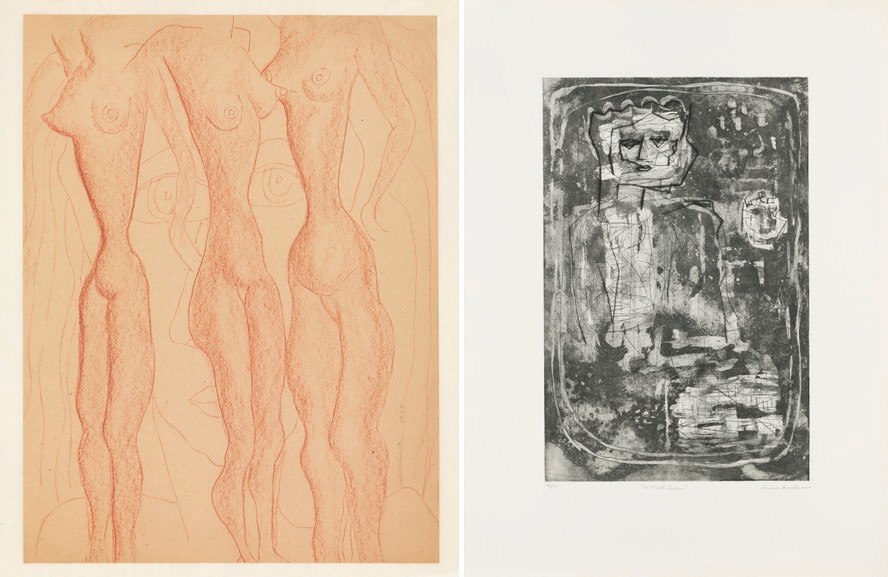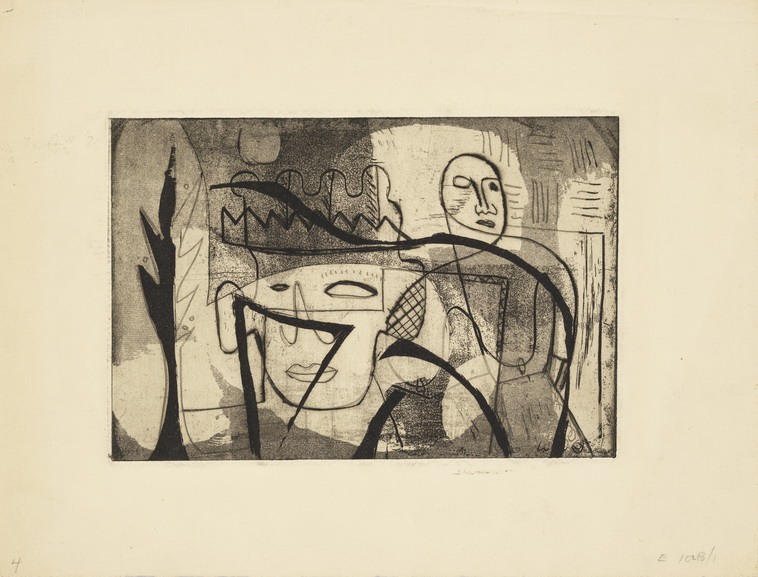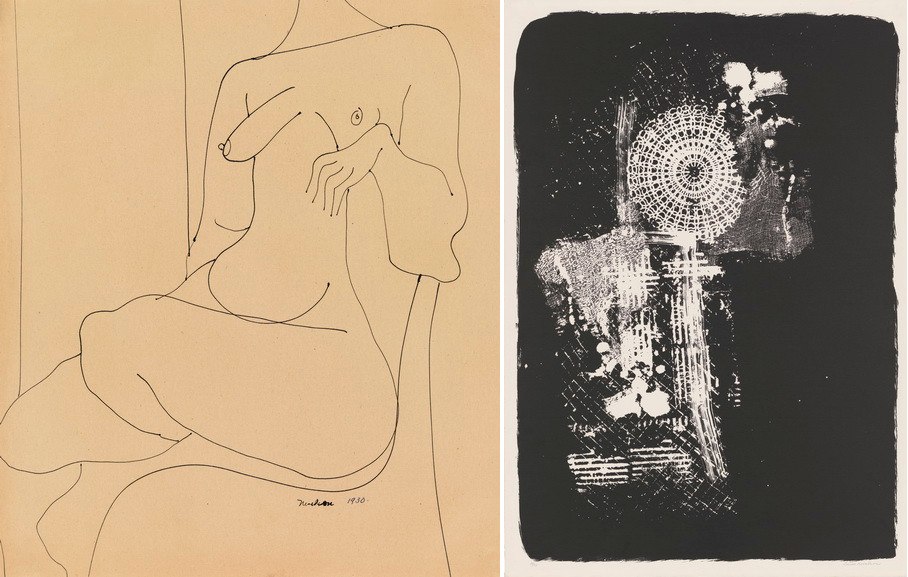[ad_1]
The history of modern art is mostly marked by the decision to break with the traditional representational cannons. During the inter-war period, production blossomed and a number of women engaged with the visual arts growth.
When it comes to sculpture, there are only a few female artists who fiercely managed to pair up with their male peers, and one of them was American Louise Nevelson.
Her bold sculptures established a successful international career and became known as a radical innovator. Nevelson is best known for wooden and monochromatic sculptures, but during her career she also produced quite a number of collages, prints, and drawings.
The current exhibition titled The Face in the Moon: Drawings and Prints by Louise Nevelson tends to shed a new light on that part of her vast production.

From Abstraction To Figuration And Back
Aside from a quiet abstract approach present in her sculptural works, in her paper works Louise Nevelson was more interested in the human body. Certainly, such a focus was again experimental, since it seems that she used the flat surface of the paper to build peculiar narratives which lead to abstraction. That was achieved by the use of unconventional or recycled materials.
Furthermore, the artist was transforming the materials used and the subjects that she depicted, which was in accordance with her belief that art could reorient one’s relationship to the built and natural world.

About The Works
The selection of the works in the show is drawn entirely from The Whitney’s collection and is centered around two of Nevelson’s most important print series – the first one made in the 1950s at her New York-based Atelier 17, while the second one was made during the sixth decade at Tamarind Lithography Workshop in Los Angeles.
Recognizable for a specific technique of layers of fabric applied on the print, these compositions represent eerie architectural forms and figures. In similar fashion, the artist’s collages reveal impeccable composing method and again the use of unconventional materials such as foil.
Clémence White, curatorial assistant, who organized the exhibition suggested that:
Nevelson’s works on paper help to elucidate the processes of this artist whose transformation of her materials challenges us to notice the expressive potential of common or overlooked things, and through this, to see our environments differently.

Louise Nevelson at Whitney
This exhibition is important not only in the context of revealing this particular aspect of her artistic practice, but it also provides a closer look in continuity and immense innovation of one of the most important figures of 20th-century American sculpture.
When stating this, it should also be noted that not only did she belong to the avant-garde circles, but she was also the one who inspired younger artists to experiment. As a matter of fact, her doings anticipated the Conceptual and gave wings to the later feminist movement.
The Face in the Moon: Drawings and Prints by Louise Nevelson is on display in the Susan and John Hess Family Gallery on The Whitney Museum’s third floor.
Feature images: Louise Nevelson – For Dance Design, 1937. Graphite pencil on paper, 9 1/4 × 17 1/4 in. (23.5 × 43.8 cm). Whitney Museum of American Art, New York; gift of the artist 69.232. © 2018 Estate of Louise Nevelson/Artists Rights Society (ARS), New York. All images courtesy The Whitney.
[ad_2]
Source link
